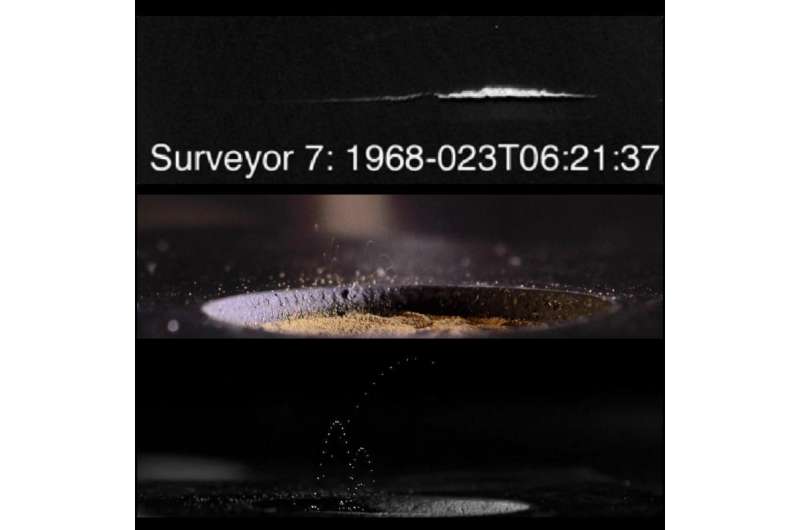Static electricity may transport dust across airless planetary bodies

A NASA-funded research team, led by Mihaly Horanyi at the University of Colorado-Boulder (CU-Bolder), has conducted laboratory experiments to bring closure to a long-standing issue of electrostatic dust transport, explaining a variety of unusual phenomena on the surfaces of airless planetary bodies, including observations from the Apollo era to the recent Rosetta comet mission. The research being done at the Institute for Modeling Plasma, Atmospheres and Cosmic Dust (IMPACT) was recently published in the journal Geophysical Research Letters, and explains how dust may be transporting across vast regions above the lunar surface and rings of Saturn, without winds or flowing water.
"Electrostatic dust processes have been hypothesized to explain these space observations. However, no theories until now were able to support these explanations," said Mihaly Horanyi, principal investigator of IMPACT research team.
The team recorded micron-sized dust particles jumping several centimeters high under ultraviolet (UV) radiation or exposure to plasmas. On the moon, these dust particles would have been lofted more than 10 cm above the lunar surface, leading researchers to conclude that the moon's "horizon glow," seen in images taken by Surveyor 5, 6, and 7 five decades ago, may have been caused in part by sunlight scattering in a cloud of electrostatically lofted dust particles.
Vaguely similar to the way dragging your feet across the carpet can generate an electric charge, the movement of electrons in the tiny spaces between dust particles can generate surprisingly large charges and forces, which can lift and move dust particles off the ground.
In addition to single particles, clusters of dust were lofted, which showed that electrostatic processes may be responsible for the Rosetta detection of fluffy dust particles released from the surface of Comet 67P.
These laboratory observations reveal that dusty surfaces can become smooth due to dust mobilization and could help explain the formation of the "dust ponds" like those seen on asteroid Eros and comet 67P, and the unexpectedly smooth surface on Saturn's icy satellite Atlas.
More information: For more information about SSERVI and the IMPACT research team, visit sservi.nasa.gov/
Journal information: Geophysical Research Letters
Provided by NASA




















